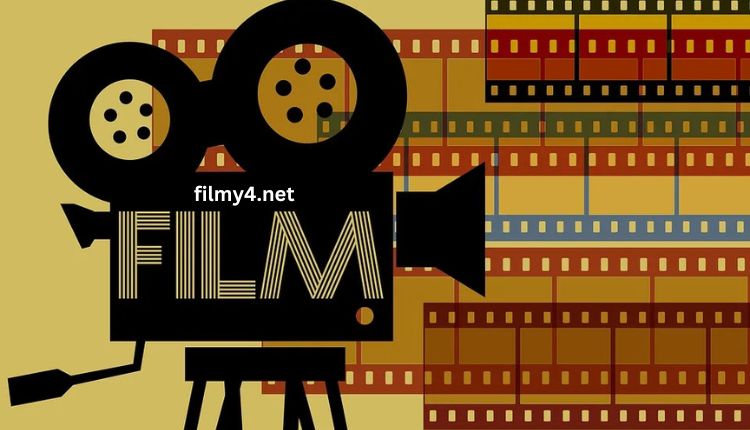The psychology of film is a subdiscipline of academic psychological research. It has gained traction due to its relevance for understanding fundamental processes in perception, memory and imagination.
Story Film
The story of a film is its narrative, which includes the characters and their settings. The story is what holds the audience’s attention and keeps them engaged from beginning to end. Storytelling is an art that requires creativity and skill. A good story can make or break a film.
A film is a set of moving pictures that can be seen on a screen or television. It is also a medium for storytelling and can be based on true events, or it can be fiction. There are many ways to tell a story through a film, including using dialogue and sound effects.
One common way to structure a film is in three acts. The first act, often called the setup, introduces the setting and basic plot of the film. The second act, or the confrontation, portrays the main conflict of the film. The third act, or the resolution, shows how the conflict is resolved. Another method of structure is episodic, which consists of a series of episodes that are loosely connected by themes or characters. This type of structure works well for films that don’t require a linear storyline.
It is important for filmmakers to understand the difference between story and plot. Plot is a chain of events, while story is the narrative that connects these events. Story involves character development and progression through an arc, while plot is the how, when, and why of a story.
The story of a film can be inspired by any number of sources, including books, plays, and other movies. You can also find inspiration from your own experiences and memories. You can also take ideas from multiple sources and combine them to create a unique narrative. If you are not sure where to start, try brainstorming with a group of friends or colleagues.
Another way to inspire a film is to look at the world around you and think about how it could be portrayed in a movie. This approach to filmmaking is known as diegesis. It refers to the fictional or fictitious world of the film and includes all events and locations shown onscreen as well as those not shown. It also includes a narrator’s voice, mood music, and other sounds that are presented as being outside the film’s narrative space.
It is also important for filmmakers to consider the length of their film when developing its story. A feature-length film is usually more complex than a short or a TV show, and it should have its own distinct story. The Hero’s Journey model is typically used to guide the development of a feature film. It is also possible to make a feature film with parallel storylines, such as Quentin Tarantino’s cult classic Pulp Fiction or Christopher Nolan’s thriller Memento.
Editing Film
The film editing process is a complex, multi-faceted art form that allows filmmakers to realize their vision and bring the story to life on screen. Editing involves splicing together footage, arranging it into a sequence, and creating a rough cut of the film. In addition, it involves synchronizing the video and audio and preparing titles and visual effects. Film editors also use their creative skills to add a sense of drama and flow to the film.
Editors need to have a variety of skills to succeed in this crucial part of the production process. They must be able to understand the story and communicate it effectively, and they should have a good eye for detail and an ability to work well under pressure. They must also be able to take direction from the director and adapt their style to suit the director’s vision. They must be able to use digital technology and editing software, as well as understand film theory and techniques.
When creating a sequence, an editor must consider the overall pacing of the film and make sure that it works with the music and sound design. They also need to keep in mind the character and theme of the film, as these will influence how they approach each scene. For example, if a character is in a stressful situation, an editor might use slow shots to create suspense. On the other hand, if the film is comedy, an editor might use fast cuts to create energy and laughs.
During the early 1900s, filmmakers began to experiment with montage, which is the process of juxtaposing multiple shot sequences to create a narrative. This technique allowed them to tell a story using the cinematic illusion of time and space. For example, the great train robbery of 1910 used multiple shots to make it look like the robbers were in motion while on the train.
The first step in the editing process is the assembly, which consists of organizing the raw footage into a coherent sequence. The editor must sort and select footage, arrange it in a logical order, and sync the audio and video. In this stage, the editor may create a rough cut and show it to producers or test audiences for feedback. A rough cut typically lacks titles, visual effects, and a musical score.
After the editor and producer are satisfied with a rough cut, they begin the process of fine cutting. The final cut is a revised version of the film that includes all the changes suggested by the editor and producers. This is the version of the film that will be released for distribution and exhibition. The editor must ensure that the final cut is coherent and consistent with the director’s original vision.
Production Film
Film production is a complex process that requires a tremendous amount of resources, people power and time. To make it to the big screen, a movie must go through five different stages: development, pre-production, production, post-production and distribution. Each of these processes contributes to a unique film-making experience that can transform an idea into a finished movie.
The first stage is the development phase, where a story is born or an existing book or article is turned into a script. Then, the producer, or creative producer, raises money to fund the project and hires a director. A director is responsible for crafting the film’s overall vision, working closely with the writer and the production team to develop the screenplay and select locations, casting actors, scouting potential shoot sites and scheduling daily shooting.
During the pre-production stage, a detailed schedule is created, a budget is outlined and insurance is procured to protect against any on-set accidents. This is also when the cast and crew are assembled, and the location scouting and set design take place. This is where the director starts to envision the shots that will be captured and may create storyboards with the help of illustrators and concept artists.
Finally, the production stage is where all the filming and sound recording takes place. Whether it’s an action sequence or a scene that captures the emotions of the characters, the director will direct each moment with precision and detail. A director must be able to anticipate the needs of each member of the crew and ensure everyone’s skills are put to use.
The end goal is to create a faithful execution of what was first written on the page. But even when things are going smoothly, film production is a demanding and sometimes grueling process. The day to day logistics of scheduling shoots, juggling talent and keeping an eye on the weather can be challenging, not to mention the grueling hours that must be logged in order to capture the footage needed to tell the story.
What’s Next?
During the post-production stage, the raw footage is refined through editing and other techniques to shape the film into a polished product. This includes everything from adding lens flare to sci-fi shorts and streamlining jump cuts and high-speed chases into the perfect action sequence. Once the film is finished, it’s ready to be distributed and shown in theaters or released on DVD, Blu-ray and streaming services.
This is where the producer will hopefully recoup their losses and make a profit. For this reason, a large percentage of the budget is often earmarked for marketing. The team develops strategies to target a specific audience and promote the film through social media, posters, television, movie trailers and media coverage. If the movie does well, it will likely make its way to other platforms like video games and internet distribution services.



